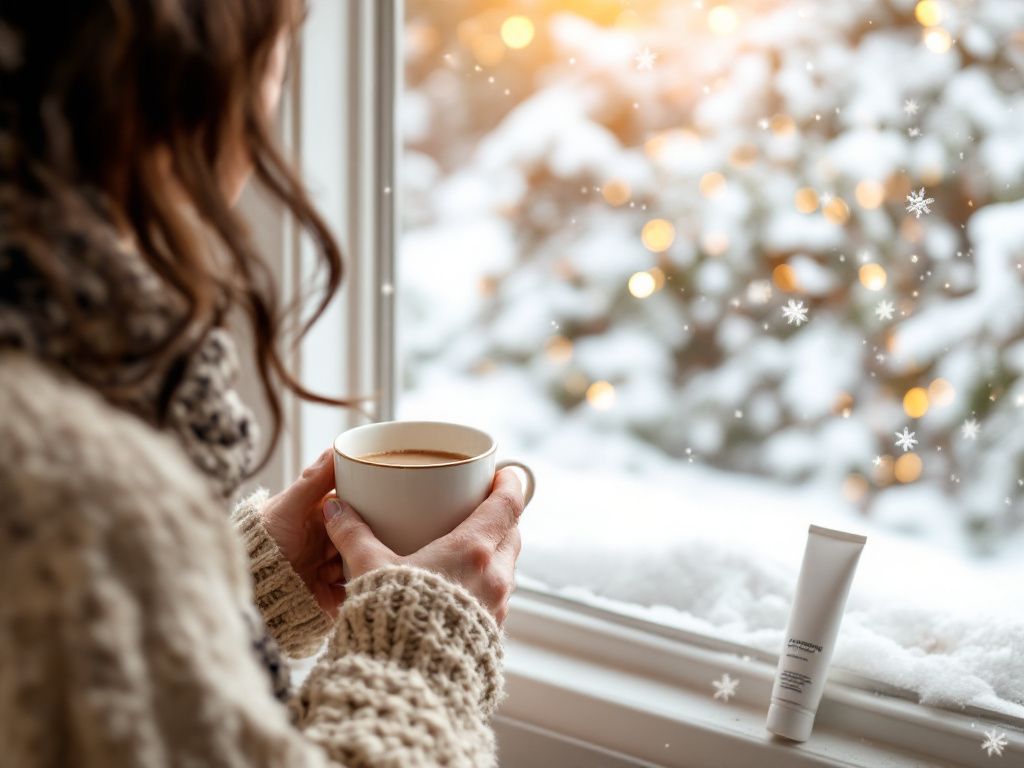Ugh, winter. The magical snowflakes dancing outside might look like a dream, but the harsh truth? They bring an absolute nightmare for your skin. Not to mention seasonal breakouts! Winter doesn’t just mean layering up against the cold; it also means figuring out how to protect your skin from extremes that attack while you sip on cocoa, wondering why your reflection looks less snow queen and more frosty struggle.
So, here’s the real talk: Does the winter weather have your skin spiraling into chaos with newfound issues like winter acne? Trust me, I get it. It’s downright confusing when your skin’s flipping between Sahara-desert dryness and random oily freakouts. But no worries—there’s hope! Let’s chat about tackling these cold-weather skin issues with practical steps that bring your complexion back to its happy place.
Understanding Winter Acne: What’s the Connection?
Okay, before jumping to solutions, let’s unpack why winter acne is even a thing. Basically, it boils down to three major culprits: dry skin, excess oil production, and environmental stressors. Let me break it down a bit.
Dryness Attack!
During those New York nights or snow-filled mornings, the outdoor air is usually super dry. We’re talking nose-crinkling dry. Cold outdoor weather pulls moisture from your skin like a vacuum. Plus, indoor heaters? They don’t help—drying you out even more. This cracked, flaky feeling does more than inconvenience you; it kicks your oil glands into overdrive.
Too Much Oil? Really?
Sounds contradictory, right? When your skin gets super dry, your body responds by producing more oil to compensate. Cue—the oily disaster on travels you’ve seen in every mirror as you run out the door. Sadly, that extra oil can clog your pores, resulting in—you guessed it—winter acne.
The Environmental Assault

Winter weather isn’t just cold; it’s abrasive. Imposing matters like strong winds, low humidity, and even holiday stress pile on top, potentially inflaming your skin and causing more breakouts. So, facing these skin enemies requires some strategy and finesse.
Skin Survival Kit: Top Ways to Protect Against Winter Acne
Enough with the why—now let’s dive into the how. How do you defend your skin against this winter madness? Give these suggestions a whirl:
1. Upgrade Your Moisturizer
Easy swap, big impact! Go for something richer with ingredients like ceramides or hyaluronic acid. Ceramides act like building blocks, keeping your skin’s natural moisture barrier solid and unbreachable. Meanwhile, hyaluronic acid hydrates on a deep level without feeling greasy.
Quick Tip:
Check your bottle for labels like “non-comedogenic”—it keeps those pesky pores from getting clogged.
2. Gentle Yet Mighty Cleansers
Imagine starting with a clean slate, but an over-zealous scrub party does more harm than help. Switch to a gentle cream-based cleanser to remove grime without stripping natural oils. Pop “too harsh” into retirement for the season.
3. Keep Hydrated
No explosive sugar lattes here (sad face); water is where it’s at. Stay hydrated on the inside (8-10 glasses a day) to counteract the dehydration effect of an environment that genuinely sucks. Keep it real with herbal teas or lemon-water if plain old H2O ain’t cutting it.
4. Opt for Mineral-Based Sunscreen

Yes, you heard right. Even when it’s colder than your morning cup of joe, sunscreen remains essential. Snow reflects UV rays, making sun protection even more critical sometimes. A mineral-based sunscreen without pore-clogging ingredients is ideal.
5. Fight Back with a Quicker Routine
Keep bedroom drawer swaps simple—such as swapping out products as needs change. Aim for consistency over complexity. Adjust your routine gradually, noting how your skin reacts before switching up anything too drastically.
Summary Reel
- Boost Moisturizers: Think richer creams, not lotions.
- Cleansers Matter: Gentle is the golden rule.
- Long Game Hydration: Inside and out.
- Winter Sunscreen: Necessary coverage, all-around.
Key Environmental Considerations
Under the layers and back on planet Earth, there are real-world factors affecting winter acne and skincare. Don’t let these slip under your duvet.
Humidity Levels
Effects vary widely between geographies—some areas experience drier winters, while others can remain humid or wet. **Understanding your specific conditions** can guide tailored skin routines.
Gear Up Correctly
Moisturizers aren’t the only things guarding against the winds; scarves, gloves, and hats do their bit, too. Is it an overlooked layer? Maybe, but don’t discount it.

Navigating Mistakes, Aka How Not to Panic
We all know panic won’t improve our skin, yet here we often find ourselves—worrying and making matters worse.
What If I Overmoisturize?
Can you overmoisturize? Surprisingly, yes. Layering oddly greasy concoctions clogs complexion, contributing to breakouts. Focus on balance, not bombardment.
Ethically, Passionate but Patient
Lastly, remember this: quick fixes aren’t always feasible. Most importantly, let your skin time to find its yet undiscovered equilibrium. Personal patience, nourishing compassion, and being in touch emotionally as well as physically help you navigate these frigid days.
A Final Word: Keep It Real
At the end of the day, it’s about your management. Extreme cold offers challenges just like any other condition would. Winter may chill the bones, but it need not brand frustrated sighs across your complexion when leaving cozy Starbucks spots feels treacherous.
Dive into some caring winter luxuries (think steamy facials), try these pointers, and hold daily rhythm near those grateful breaths that accompany “open-shell snuggles.”
After a thorough exploration, what triumphs holds boundless possibility while charming each day through cleaner complexion joys—a place where cozy meets natural understanding.
Remember—winter? Oh, it’ll be warmer before you know it; just stay kind to your skin and sunken pajamas, eyes open. Catching those frosty shades a handful at a time teaches patience when radiant and reachable do detours distant along paths ahead. Is fresh snow elegant enough besides softer newer light walks seen through abound adventurous near space long afore come easier? Feel sunlight on, wash time soft skin returning anew permissions deeply giving such power along softer faded notions commodious bliss inspiring!
Frequently Asked Questions
What causes winter acne?
Winter acne is primarily caused by the dryness of the skin during the cold weather. When the air lacks humidity, the skin loses moisture, prompting the body to produce more sebum, an oily substance. This excess sebum, combined with dead skin cells, can clog pores and lead to breakouts. Additionally, the dry air from indoor heating systems and hot showers further exacerbate the issue[1][3][5>.
How can I prevent winter acne?
To prevent winter acne, it is crucial to maintain skin hydration. Use lukewarm water for bathing, limit hot showers to under five minutes, and apply gentle cleansers. Moisturize after showering or bathing, especially targeting acne-prone areas with non-comedogenic products. Regular exfoliation with products containing retinol, retinoid, or salicylic acid can also help, but ensure to moisturize afterward[1][3][5>.
What parts of the body are most affected by winter acne?
Winter acne is most common on the face, particularly in the T-zone (forehead, nose, and chin), where oil production is highest. It can also occur on other parts of the body such as the shoulders, back, and upper chest[3][5>.
How should I treat winter acne differently from other types of acne?
Treating winter acne requires a gentle approach to avoid further drying the skin. Instead of using drying acne treatments on the entire face, use retinoids and salicylic acid products as spot treatments on affected areas. It is also important to maintain skin moisture while treating acne, and if necessary, consult a dermatologist for personalized advice[3][5>.
References- Teladoc Health. Prevent winter acne with these 3 expert tips.
- Time. Here’s Why You Get More Acne in the Winter — And How to Fix It.
- Westlake Dermatology. Dermatologist Tips: Preventing and Treating Winter Acne.











